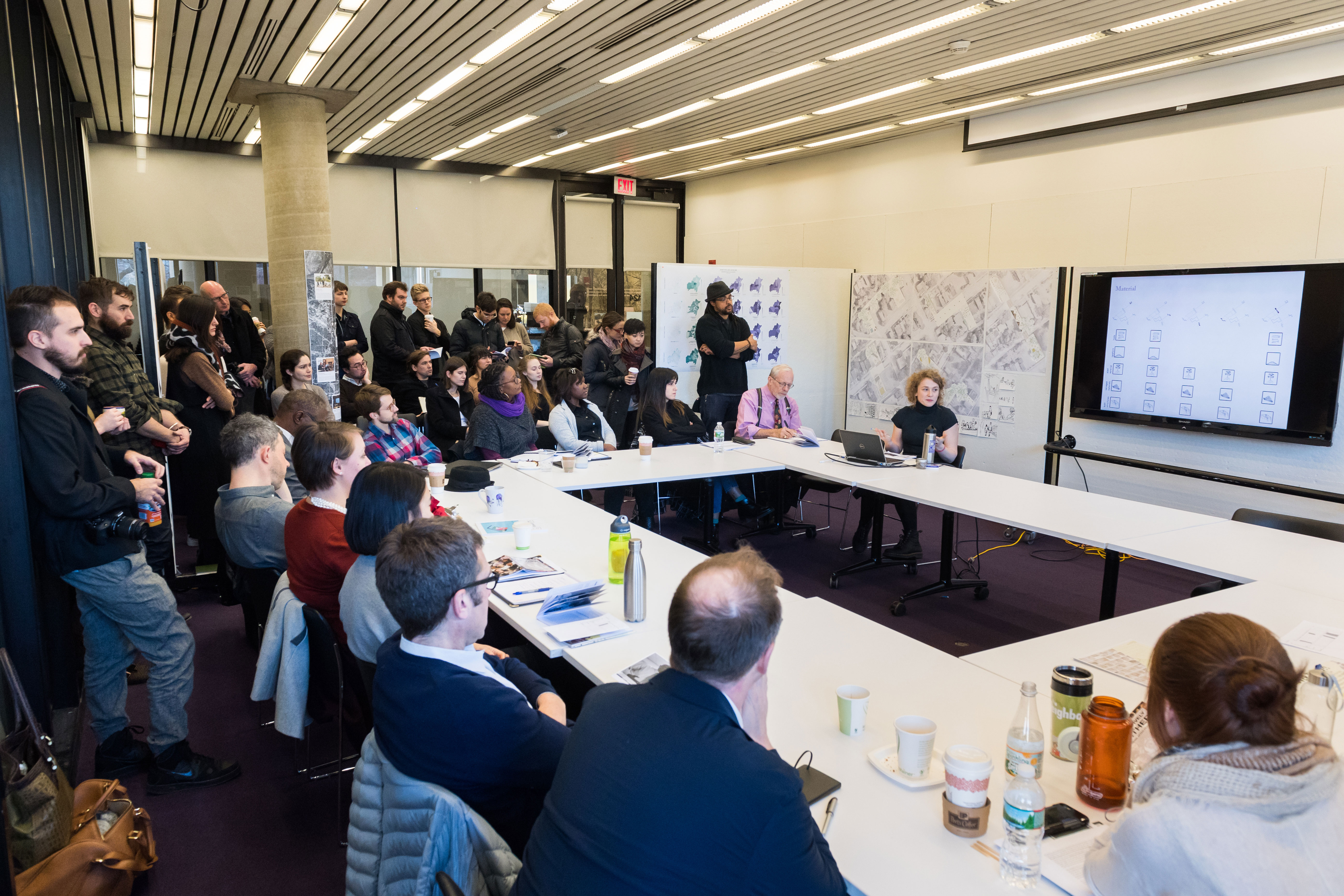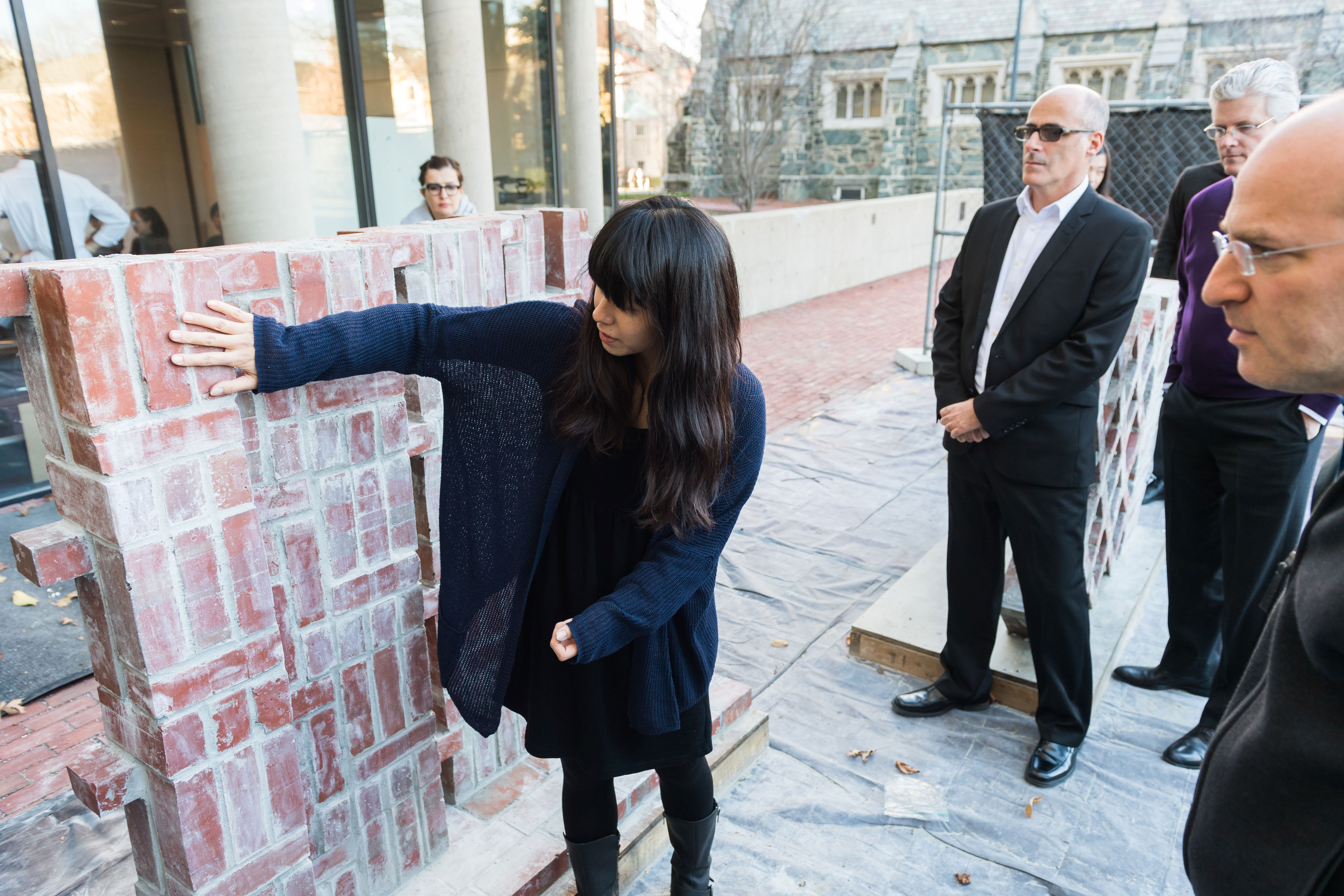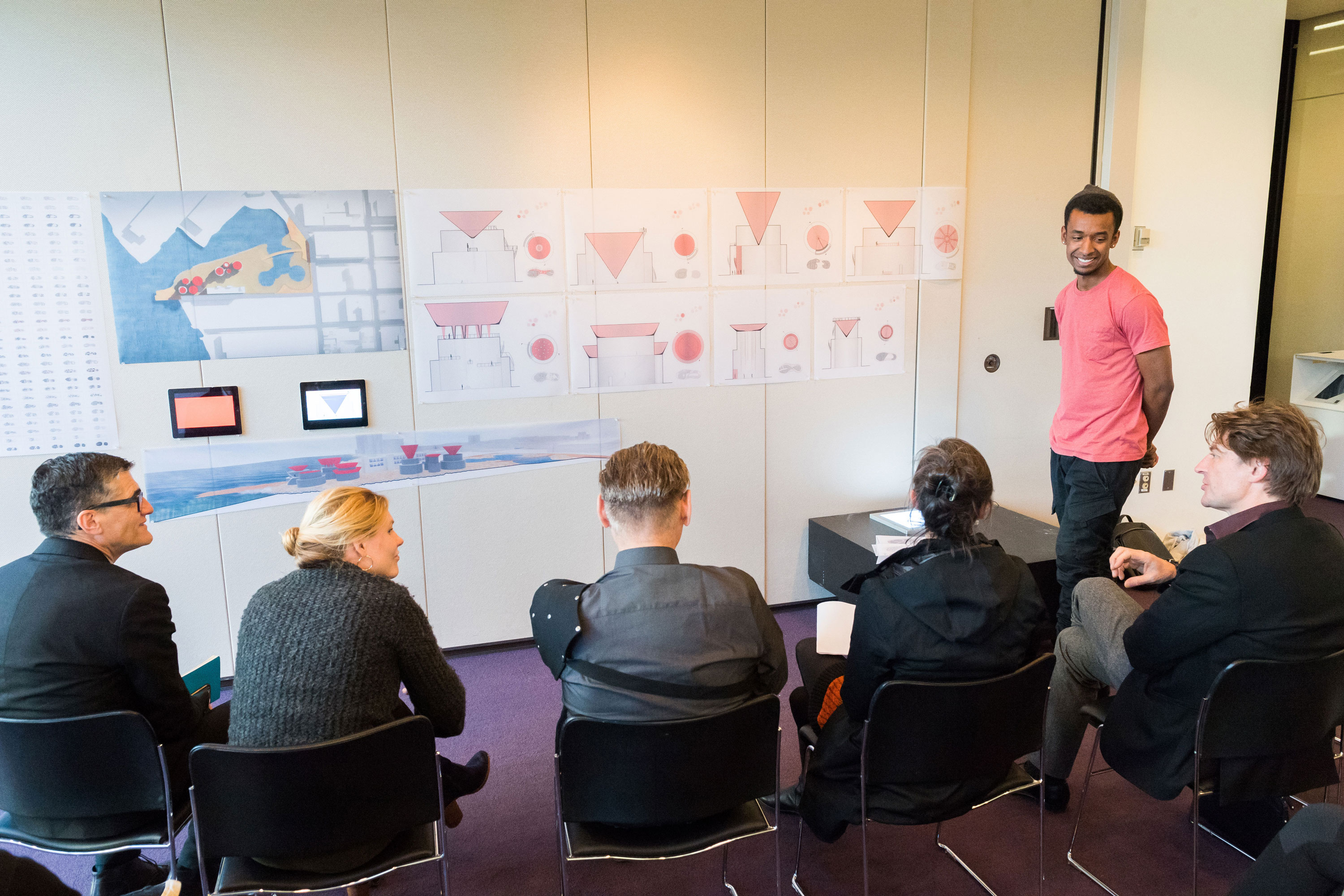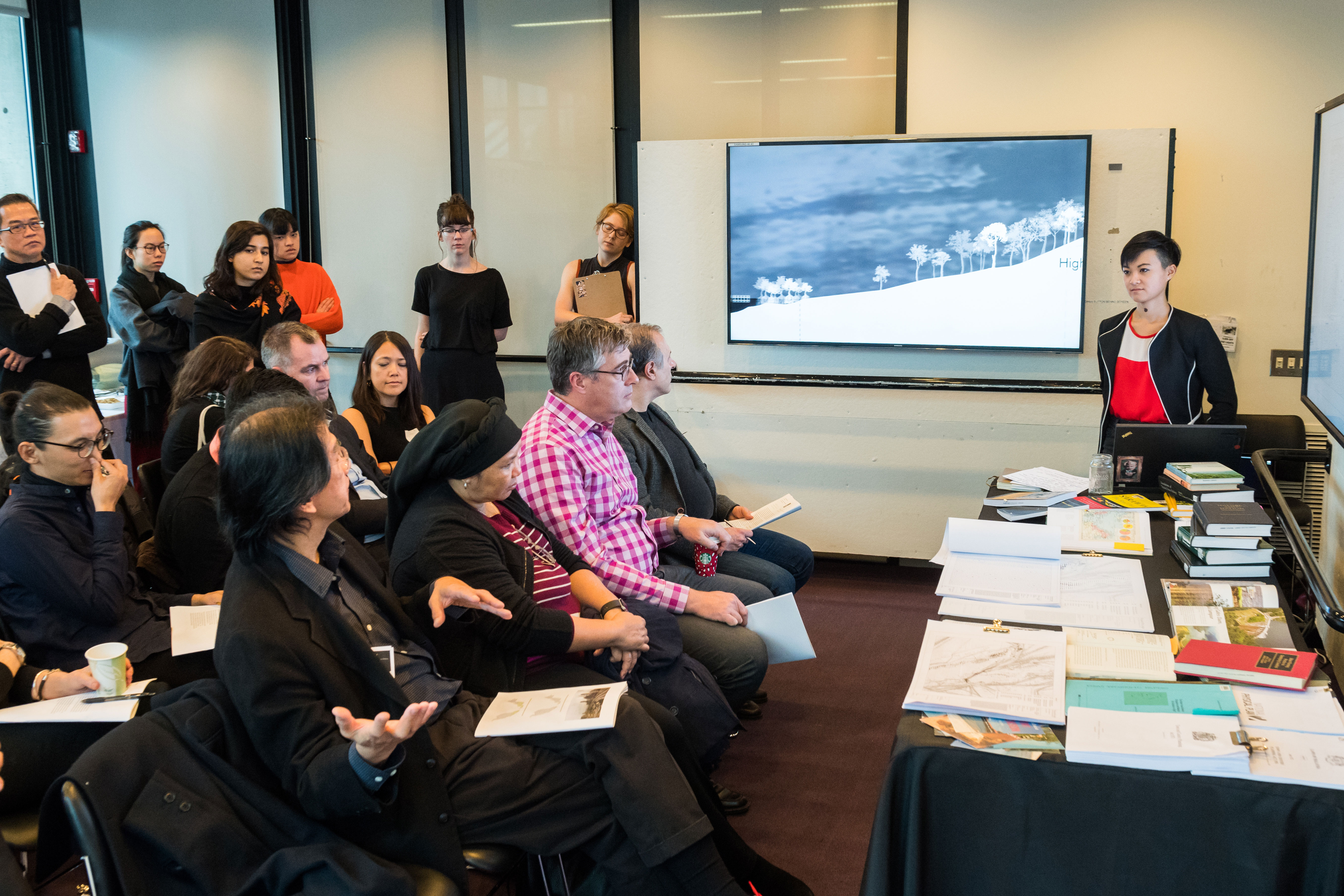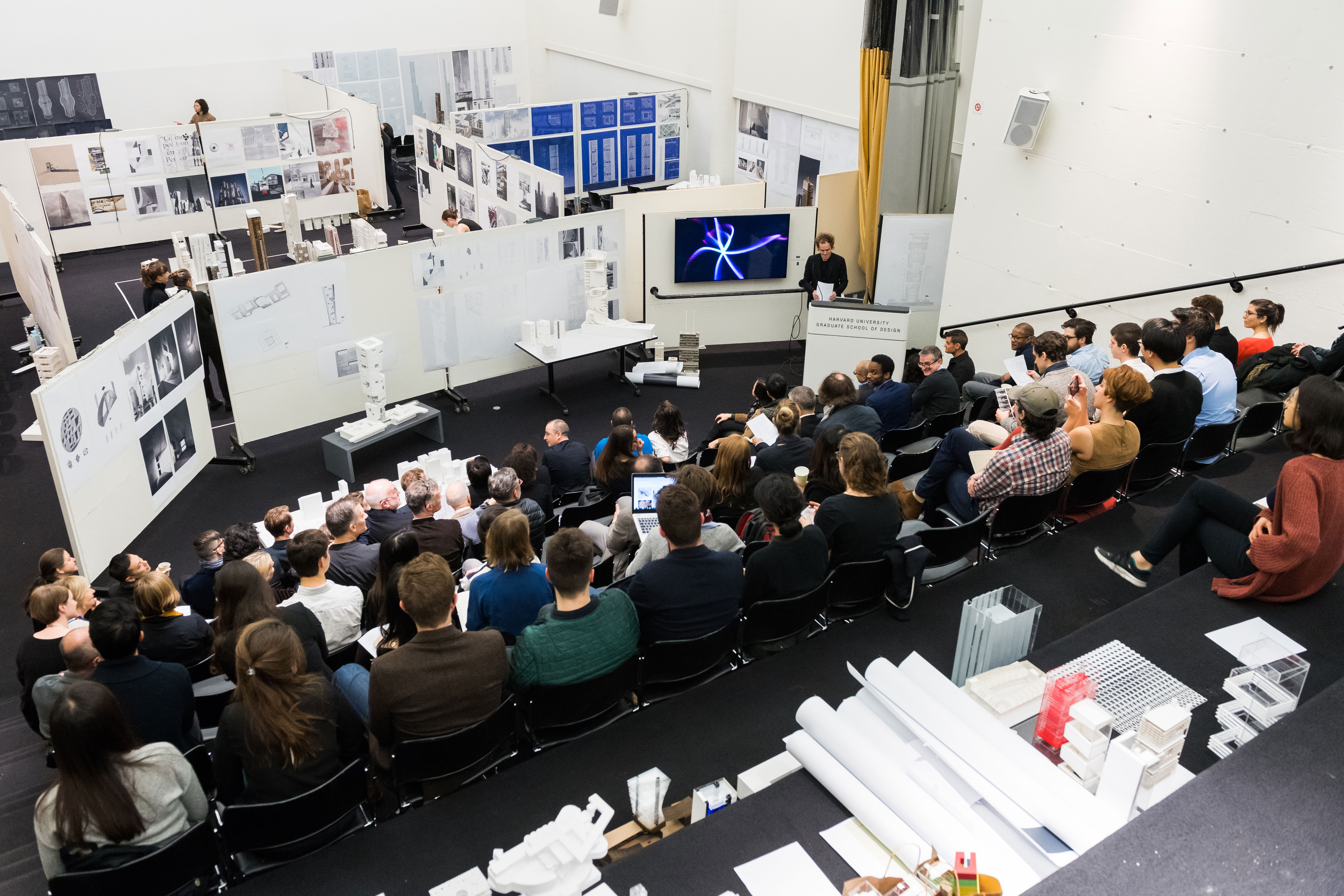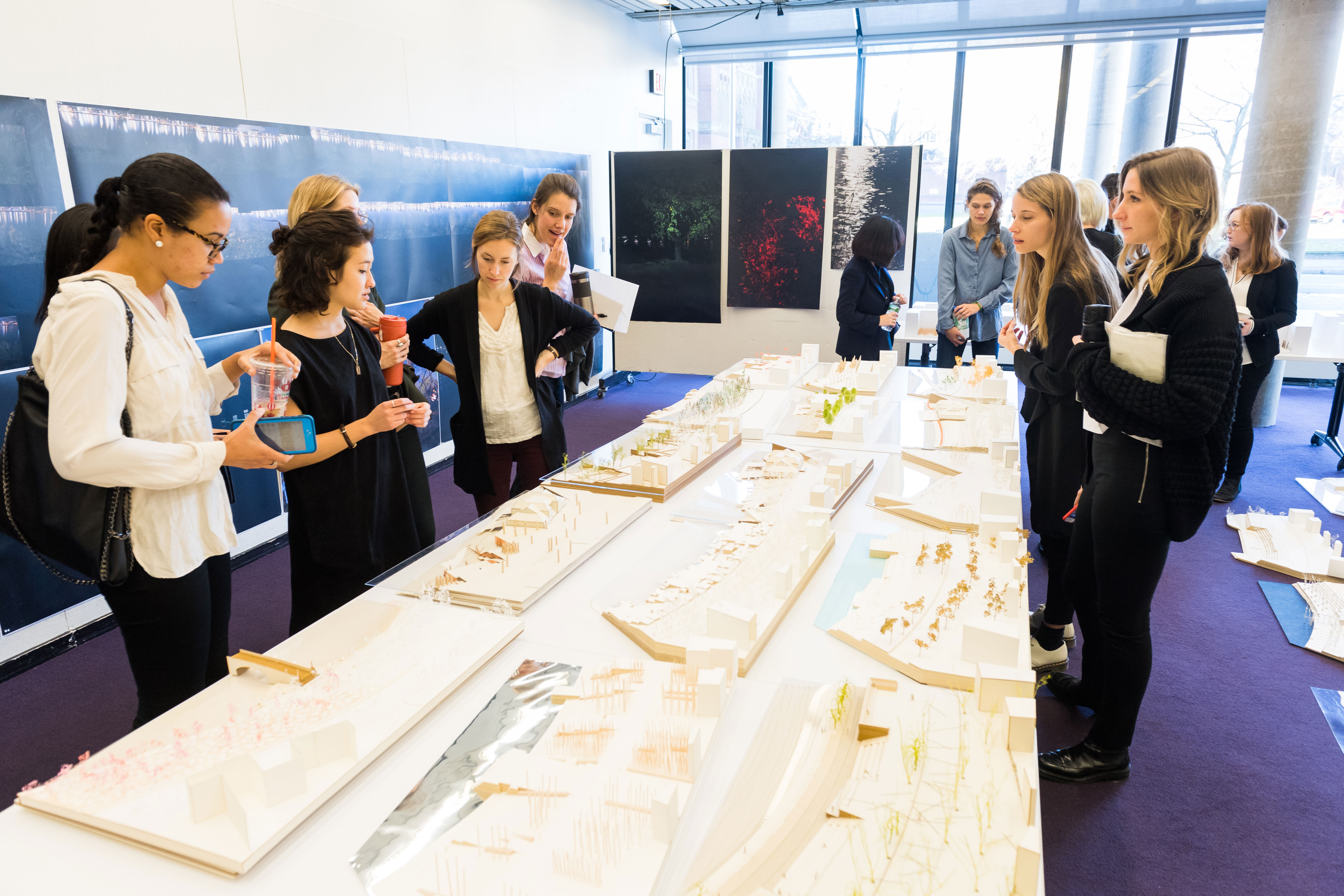Studio Reviews: Fall 2016 Highlights
During the fall semester, students investigated pressing global, regional, and local issues through studio work. Courses tackled a range of complex topics, from perceived notions of materials and their use in architecture, to how design can address racism, segregation, and poverty in our inner cities.
Final studio reviews took place December 5-9, 2016, and brought alumni and design experts to campus to serve as studio review critics. Here are final review snapshots from a few of the Fall 2016 studio courses instructed by fellow GSD alumni:
Affirmatively Further: Fair Housing After Ferguson, an interdisciplinary studio instructed by Daniel D’Oca MUP ’02, associate professor in practice of urban planning, encouraged students to think openly and creatively about fair housing in America. Working with local housing advocacy groups in St. Louis, students analyzed and mapped housing patterns in the region. Their work culminated in a playbook of individual speculative proposals, both site-specific and scalable, meant for housing advocates, activists, and the broader public.
The architecture studio Brick: Thick/Thin, taught by Design Critic Frano Violich MArch ’84, challenged perceived notions of brick and its use in architecture, and suggested viable proof-of-concept alternatives that raise questions about surface, structure, and material character. In collaboration with the International Masonry Institute, students produced a full-scale prototype of a building detail of their choice. The Rogelio Salmona Foundation hosted the studio in Bogota, Colombia, a city recognized as “the city of brick.” Through an iterative process of digital form-making and hands-on prototyping, students discovered the potential of innovating with brick.
In the studio INTERFACE: Constructing the Edge for Malaysia Vision Valley taught by Stephen Gray MAUD ’08, assistant professor of urban design, and Zaneta Hong MLA ’07, lecturer in landscape architecture, students studied the masterplan for the Malaysia Vision Valley project, a new economic growth area announced by the Malaysian Government in 2015 and comprised of 108,000 hectares of land. Their work led to an interdisciplinary exploration of the interface between urban development, transportation infrastructure, and socioeconomic networks in the context of 22nd-century urban growth and economic expansion.
The landscape architecture studio Inherent Vice focused on the art of transforming and creating new landscapes within an urban site conditioned by existing infrastructure and complex contextual circumstances. Under the direction of Design Critic Ken Smith MLA ’86, students tested and developed design interventions addressing access and occupancy of two abandoned “off-limits” sites in New York City—the Ridgeword Reservoir on the Brooklyn-Queens border and Bushwick Inlet in Brooklyn. A parallel investigation of clothing design served as a background for exploring the art and medium of contemporary landscape form making, materiality, and fabrication.

